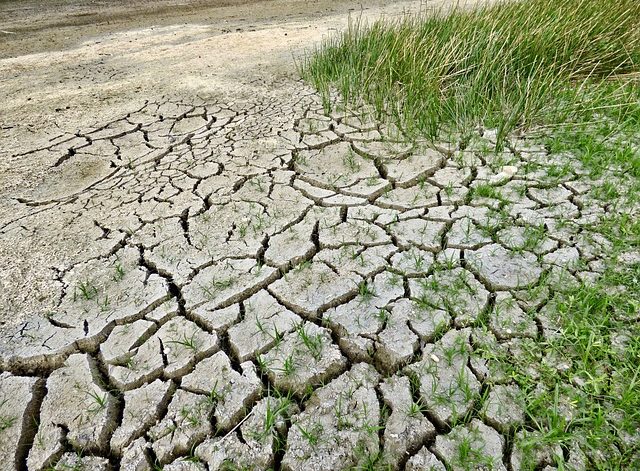Introduction:
Moving past global warming, the world has entered into the era of global boiling (for more info: What exactly is Global Boiling? – Causes, Effects, Solutions). As one of the most vulnerable countries, Pakistan is already facing a myriad of problems due to the changing environment and climatic effects it has on our landscape, weather and most of all glaciers. Climate Change in Pakistan is a serious problem that is getting worse every year. This is just the beginning and there are already ongoing climate change induced disasters that have happened in Pakistan.
Also read: Exploring Pakistan’s Vulnerability to Climate Change: A Closer Look
Climate Change Effects in Pakistan:
Pakistan is a highly vulnerable country to climate change. Climate Change in Pakistan is a really serious problem. Changing climatic conditions such as shift in seasons, changing temperature and precipitation patterns, extreme weather events etc have disastrous impacts on Pakistan, such as
- Heatwaves:
Pakistan faces “significantly higher average temperatures than the global average, with a potential rise of 1.3°C-4.9°C by the 2090s over the 1986-2005 baseline,” according to a study. Furthermore, between the years 1997 and 2015, Pakistan saw 126 heatwaves, which means an average of seven each year, and this trend is only increasing upwards rather speedily.
Globally temperatures have increased undoubtedly, however, Pakistan already suffers from very high summer time temperatures and the heatwaves along with poor infrastructure and economy has only aggravated this into something extremely deadly. People usually poor women and children and laborers are dying from heat strokes, inaccessible electricity has driven more people to varying states of heat exhaustion.
For more detailed information, kindly read: Heatwaves in Pakistan And India – Causes, Effects, Solutions - Sea Level Rise:
Coastal flooding, land submersion and displacement of people are the top disastrous consequences of rising sea levels that are going to and being felt in most developing countries including Pakistan. You might also be interested in: Mangroves of Pakistan – Types, Importance, and Environmental degradation - Floods:
Changing precipitation patterns, combined with other factors that are a result of climate change will increase the frequency of floods in Pakistan. Statistics from the 2010 floods demonstrate the devastating effects on the 20 million individuals who lost their homes, were injured, or went missing. Similarly, another flood in Pakistan in 2012 wreaked havoc.
Also check out: How to Reduce Disastrous Impacts of Floods? – Mitigation Methods
The most recent couple of examples are as recent as August 2023 in the upper regions of Chitral (Read more: Severe Devastating Monsoon Floods in Yarkhoon Valley Chitral ) and the devastating monsoon floods of 2022 respectively. These are all directly and indirectly linked to the changing climate and the effects are being felt by Pakistan quite strongly due to its geographical location. - Cyclones/Typhoons:
Cyclones will threaten the coastal communities due to the rising sea temperatures and especially regions like Karachi, Baluchistan and Gwadar will really be affected. Read: Tropical Cyclones and their Causes, Effects and Management - Water and Food Scarcity:
Water will be scarce as will be food. Un arable land due to higher temperatures and the responsibility of feeding a large population. Water will be scarce in many cities like Karachi. Food Insecurity will only increase with droughts and famine conditions. Read: Food Security and Climate Change in Pakistan
Changes in Pakistan’s hydrologic regimens are already occurring and due to a lack of ongoing research locally, its water supplies still are largely unknown, although dry situations are projected to become more common. Read: The Projected Future of Water Scarcity Crisis In Pakistan and Water Scarcity Crisis in Pakistan: Causes, Effects, Solutions - GLOFs:
Glacial lakes melting and causing floods will not just increase mountain communities being displaced but will also cause the whole region of northern Pakistan to be in danger of permanently and irreparably be lost to the climate change and its effects. The most recent example is the Floods in Chitral, Yarkhoon Valley. For more info: Glacial Lake Outburst Flood (GLOF) -Causes, Impact, Solution and Glacial Lake Outburst Floods in Pakistan- Causes and Effects
Check out: - Famine:
Higher temperatures, lack of water due to hot temperature, depleted water tables and lack of arable land due to urbanization, people will be starving for food and it will slowly become very unavailable to most people and the brunt of it would be suffered by the lower-middle working class. Due to decreasing food production, women and children will be more prone to malnourishment and malnutrition.
Check out: Climate Change Impacts on Coastal Areas and Marine Resources of Pakistan - Diseases:
Vector borne and water borne diseases will become widespread with increased instances of malaria and dengue. For more information, read: Climate Change Impacts Human Health – Pandemics The Future? - Displacement and Migration:
All these disasters will force people to move to different regions where they will be more susceptible to these effects. Environmental injustice will be widespread and another issue to be tackled because mostly these effects will be felt by religious and ethnic minorities in Pakistan, since they are frequently confined to hazard-prone land and face challenges to treatment, including financial constraints resulting from informal work or even a lack of one.
Also check out: Climate Change Impacts on Plain Areas Landform of Pakistan
Solutions to Climate Change Effects in Pakistan:
Aside from urgent and immediate solutions to climate change, communities particularly those most severely being or going to be impacted by them should be involved in searching or looking for a solution. Building community resilience and considering in their unique views, opinions and local knowledge of the topography and landscapes can be used as a valuable source to develop climate resilient plans.
Also check out: Sustainable Green Living In Pakistan – Combat Climate Change
Rather than being seen as recipients, they should be treated as participants in developing resilience.
The local governments should allocate community centers and provide the resources needed to combat any disastrous situation in the event it occurs, provide them with good communication towers, human resources so that they can implement good disaster management plans that respond and resonate well with the community they are a part of.
Climate change is undoubtedly going to negatively effect Pakistan’s economy, income, food, water, landscape and completely change it in the upcoming years. It is imperative that the authorities pay keen attention and take measures to tackle this sensitive issue that can and has effected millions of people already.
You might also want to check out: Lack of Climate Change Research in Pakistan – Need and Importance
We hope you liked this post! Please comment below if you have any suggestions, comments or feedback! We at #envpk love hearing from readers! Thanks




